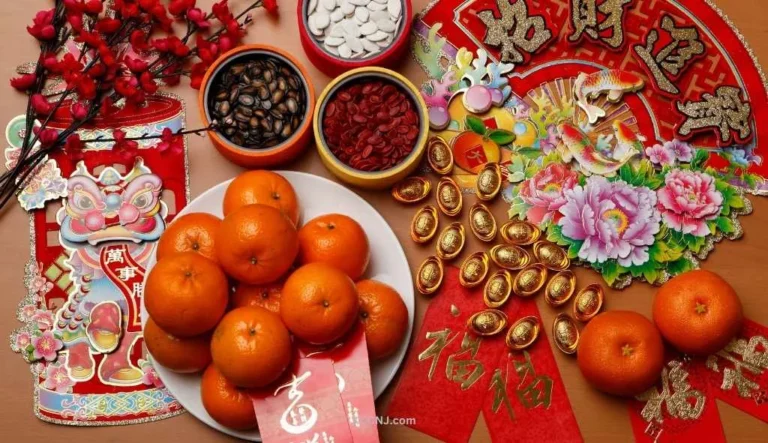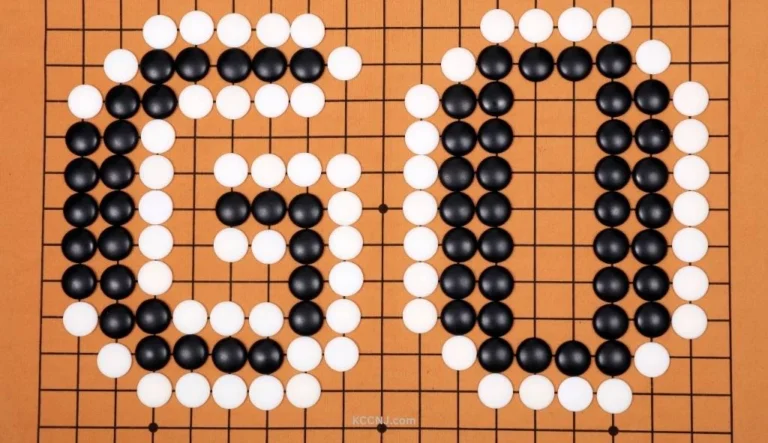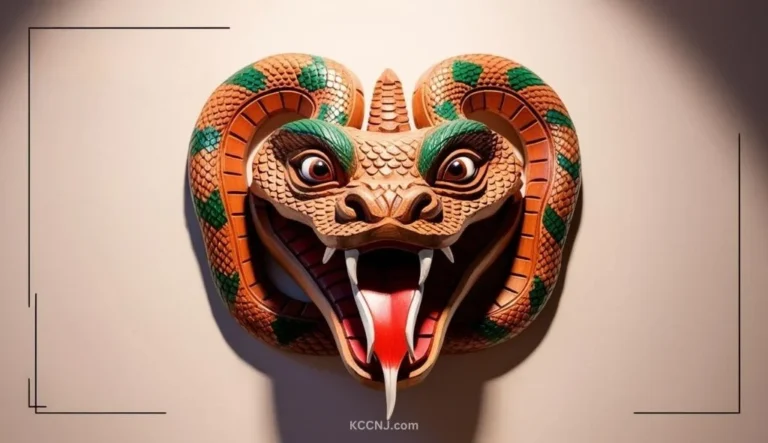10 Tasty Chinese New Year Snacks for Good Fortune
Chinese New Year snacks are traditional treats enjoyed during the Lunar New Year celebration. These snacks symbolize good fortune, prosperity, and happiness for the coming year. Popular options include pineapple tarts, love letters, bak kwa, and nian gao.
Traditional Chinese New Year Snacks
Pineapple Tarts
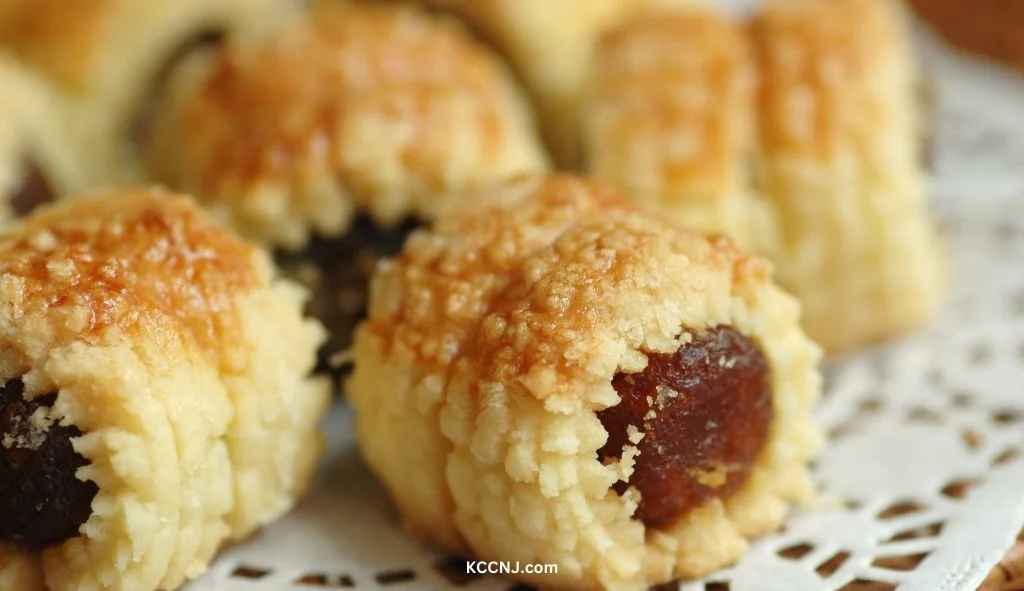
Pineapple tarts are a beloved Chinese New Year snack. These buttery pastries have a sweet pineapple filling. The Chinese word for pineapple sounds like “prosperity comes.” People eat these tarts to bring good luck and wealth in the new year.
To make pineapple tarts:
- Prepare the pineapple filling by cooking grated pineapple with sugar until thick.
- Make a buttery pastry dough.
- Form the dough into small tart shells.
- Fill each shell with pineapple filling.
- Bake until golden brown.
Pineapple tarts have a rich, sweet-tart flavor. The pastry is crumbly and melts in your mouth. The pineapple filling adds a tangy sweetness.
Love Letters (Kuih Kapit)
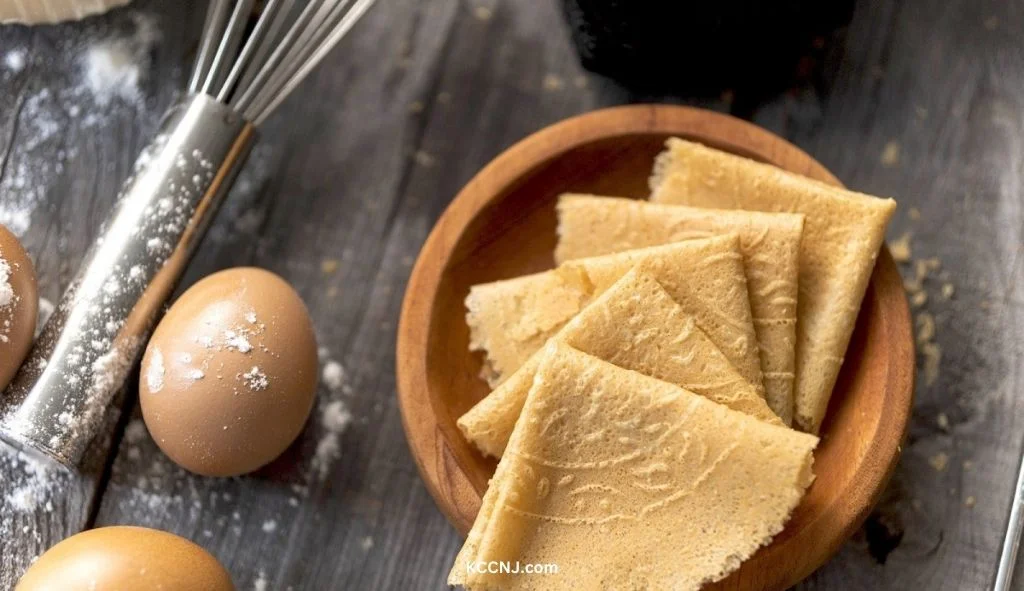
Love letters, also called kuih kapit, are thin, crispy wafer rolls. They are a traditional Chinese New Year treat in Malaysia and Singapore. These delicate cookies symbolize love and affection.
To make love letters:
- Mix rice flour, coconut milk, eggs, and sugar to make a thin batter.
- Cook the batter between special molds to create thin wafers.
- While still hot, roll the wafers into cylinders.
- Let cool to become crisp.
Love letters have a light, crispy texture. They have a subtle coconut flavor and mild sweetness. These wafer rolls are often given as gifts during Chinese New Year.
Bak Kwa
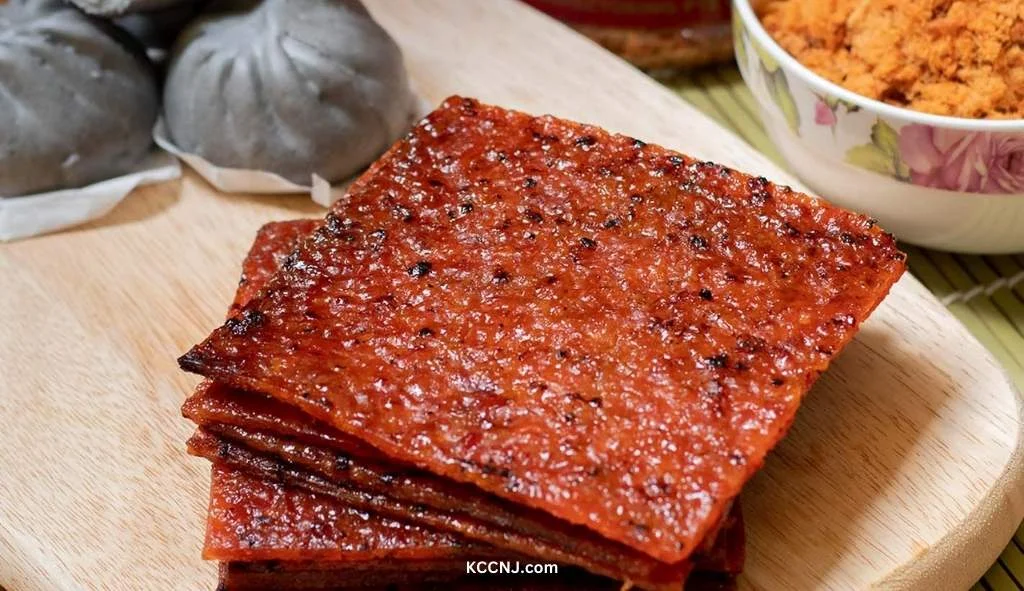
Bak kwa is a type of sweet and salty dried meat, similar to jerky. It is very popular during Chinese New Year in Singapore, Malaysia, and parts of China. Bak kwa symbolizes good fortune and abundance.
To make bak kwa:
- Marinate thin slices of meat in a mixture of soy sauce, sugar, and spices.
- Dry the meat in an oven or over a charcoal fire.
- Grill or broil the dried meat for a smoky flavor.
Bak kwa has a chewy texture and a sweet-savory taste. It is often given as a gift or served to guests during Chinese New Year visits.
Nian Gao (Sticky Rice Cake)
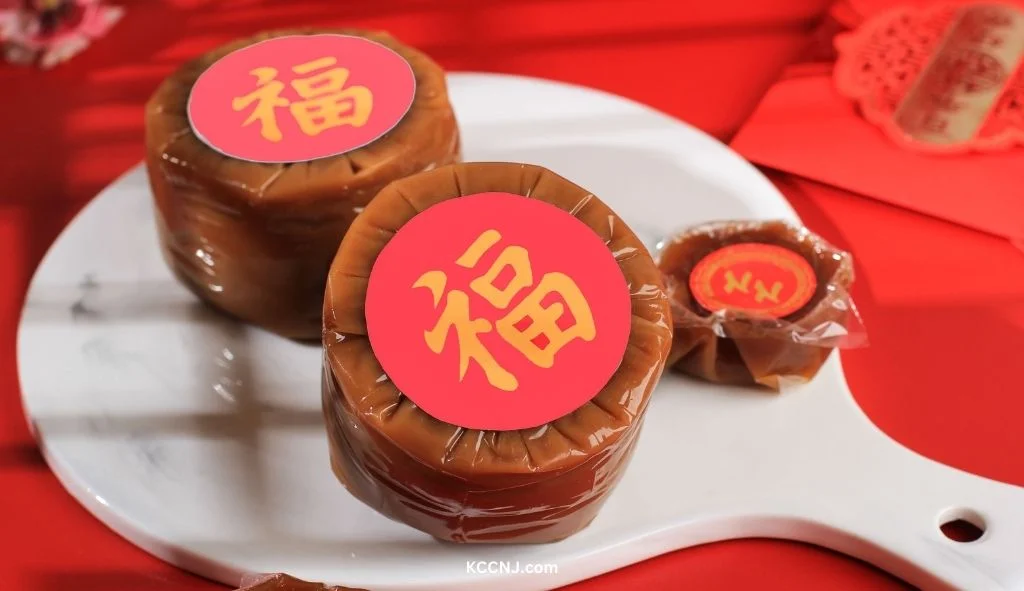
Nian gao is a traditional sticky rice cake eaten during Chinese New Year. Its name sounds like “higher year,” symbolizing growth and improvement in the coming year. Nian gao is believed to bring good luck and success.
To make nian gao:
- Mix glutinous rice flour with water and sugar.
- Steam the mixture until it forms a sticky, chewy cake.
- Slice and serve as is, or pan-fry for a crispy exterior.
Nian gao has a dense, chewy texture. It has a mild sweetness and can be flavored with red beans, dates, or other ingredients. Some people enjoy it plain, while others prefer it pan-fried.
Kuih Bangkit (Tapioca Cookies)
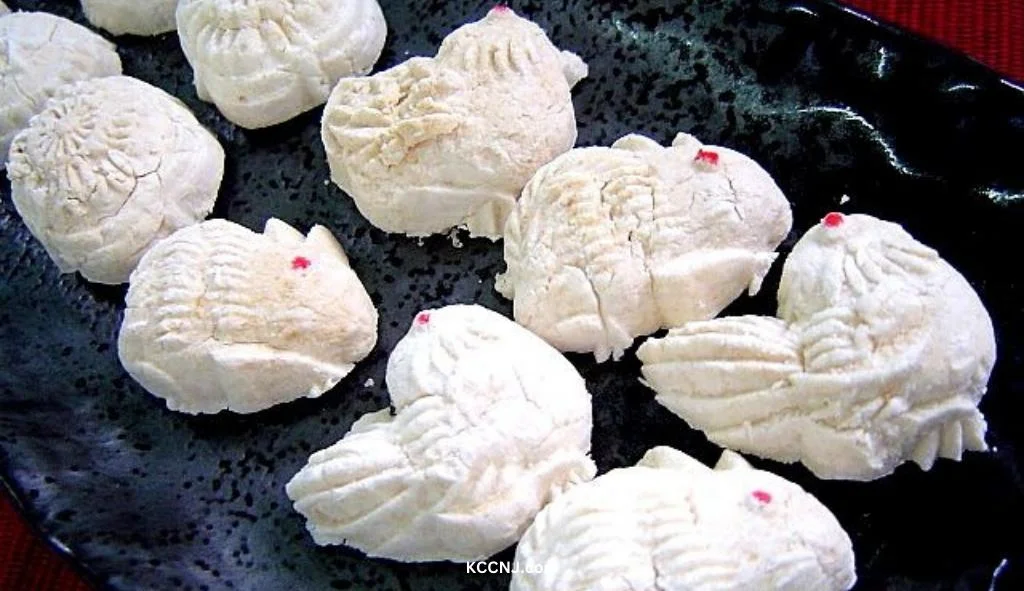
Kuih bangkit are light, crumbly cookies made from tapioca flour and coconut milk. These melt-in-your-mouth treats are popular in Malaysia and Singapore during Chinese New Year. They symbolize light and prosperity.
To make kuih bangkit:
- Toast tapioca flour until fragrant.
- Mix the flour with coconut milk, sugar, and eggs.
- Form the dough into small shapes, often using special molds.
- Bake until lightly golden.
Kuih bangkit have a delicate, crumbly texture that dissolves quickly in your mouth. They have a subtle coconut flavor and are not overly sweet.
Modern Chinese New Year Snacks
White Rabbit Candy
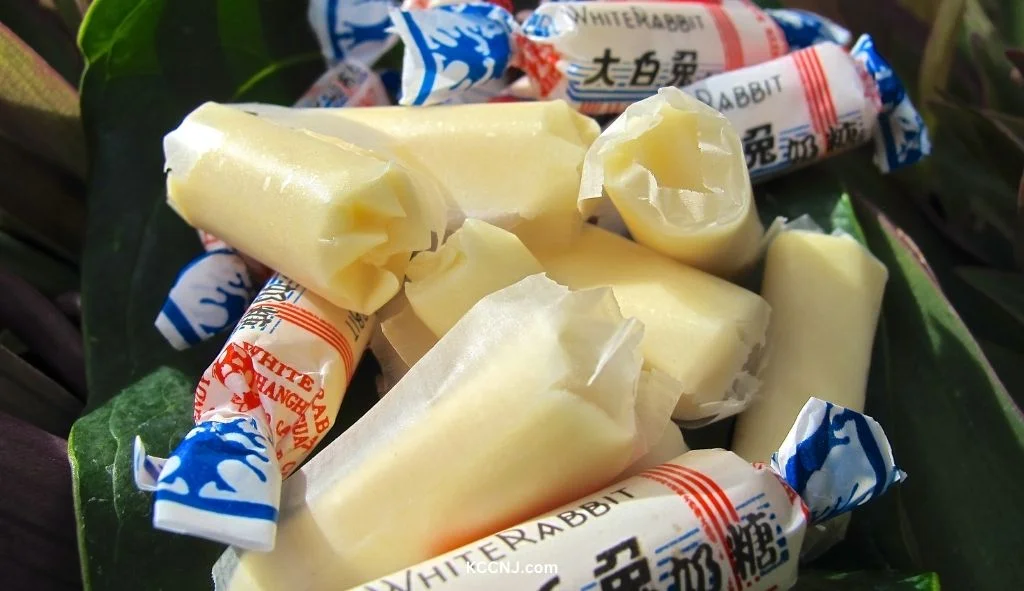
White Rabbit candy is a chewy milk candy that has become a popular Chinese New Year treat. These individually wrapped candies are creamy and sweet. They bring back childhood memories for many people.
White Rabbit candies are made from milk, sugar, and corn starch. They have a soft, chewy texture and a rich milk flavor. The wrappers are edible rice paper, adding to their unique appeal.
Salted Egg Yolk Snacks
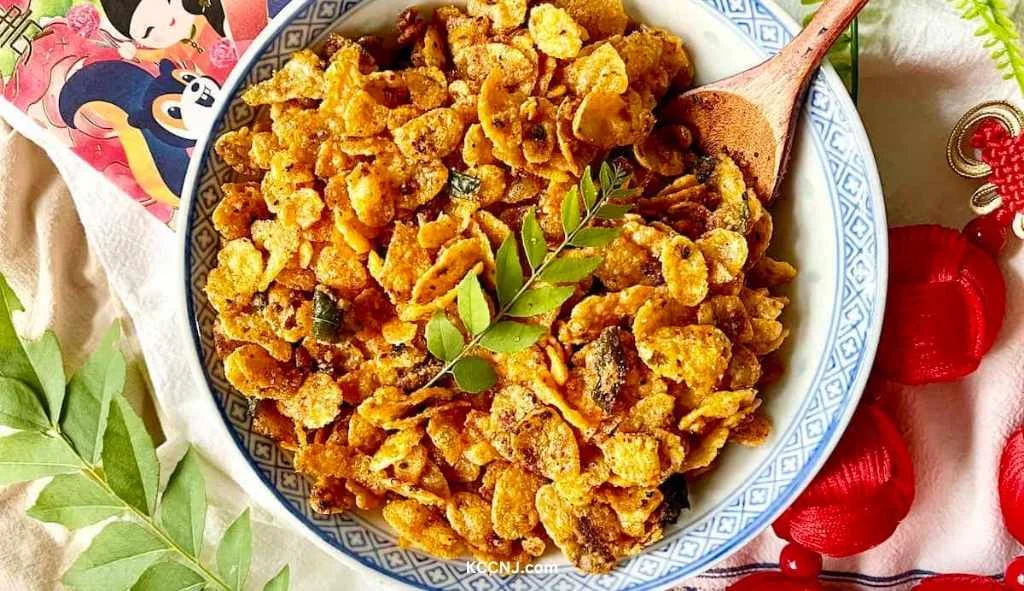
In recent years, salted egg yolk flavored snacks have become very popular during Chinese New Year. These snacks combine the rich, savory taste of salted egg yolks with various bases like potato chips, fish skin, or nuts.
To make salted egg yolk snacks:
- Cook salted egg yolks until crumbly.
- Mix with butter and spices to create a coating.
- Toss with the chosen base (chips, nuts, etc.) and bake or fry.
These snacks have a bold, savory flavor with a hint of saltiness. They are often quite rich and indulgent.
Seaweed Rice Crackers
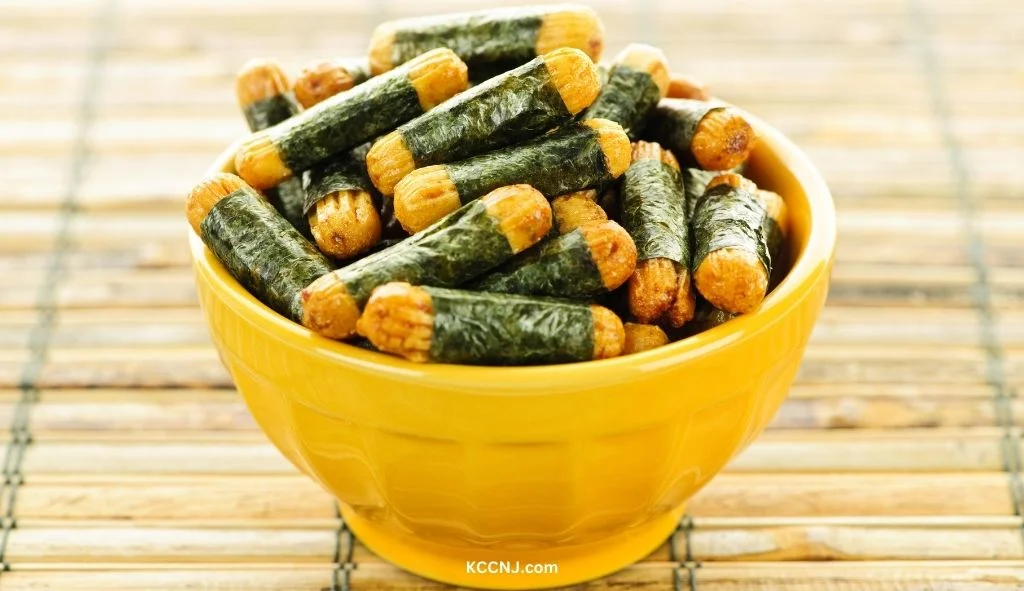
Seaweed rice crackers are a modern twist on traditional rice crackers. These light, crispy snacks combine the flavors of seaweed with the satisfying crunch of rice crackers. They are a popular choice for health-conscious snackers during Chinese New Year.
Seaweed rice crackers are made by baking or frying rice crackers and coating them with dried seaweed and seasonings. They have a crisp texture and a savory, umami flavor from the seaweed.
Mandarin Orange Chocolates
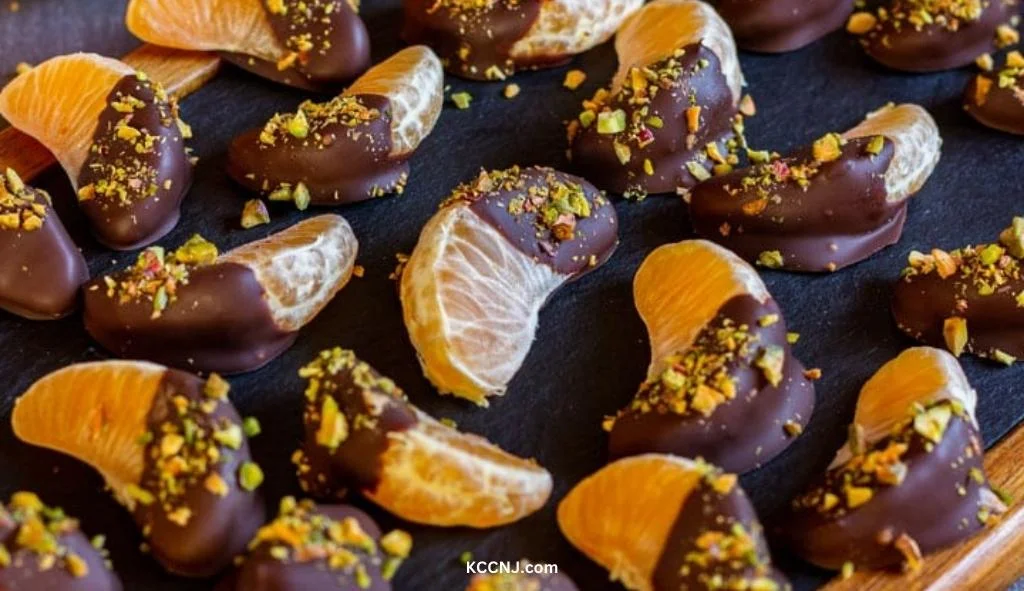
Mandarin oranges are a traditional symbol of good luck during Chinese New Year. Modern confectioners have created mandarin orange flavored chocolates as a festive treat. These chocolates combine the familiar citrus flavor with rich chocolate.
Mandarin orange chocolates often come in the shape of oranges or orange slices. They have a smooth chocolate exterior with a fruity, orange-flavored filling. The combination of chocolate and citrus creates a balanced, indulgent flavor.
Egg Rolls
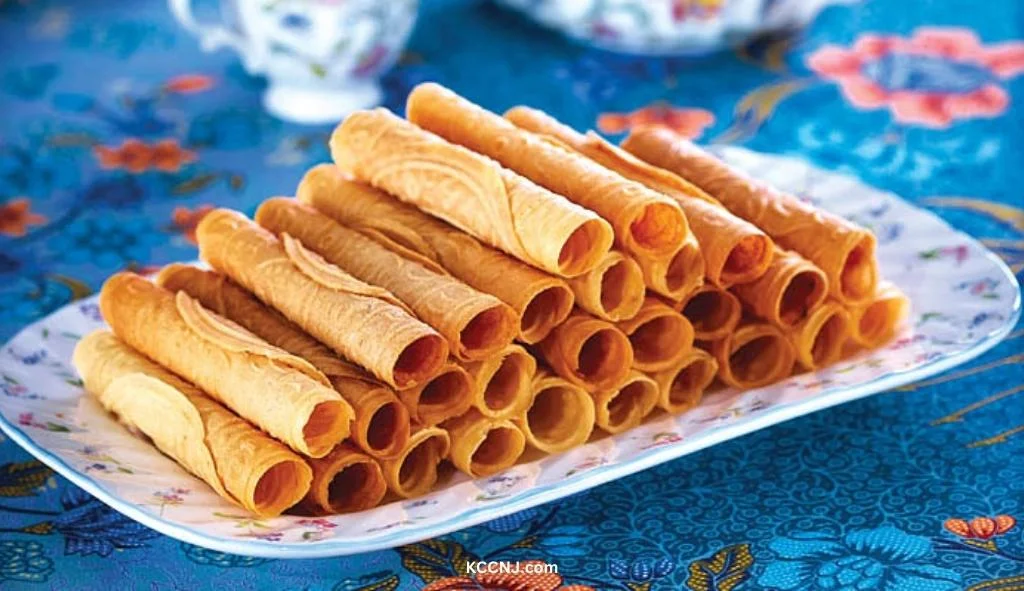
Egg rolls, while not exclusively a Chinese New Year snack, have become a popular treat during the holiday. These crispy, cylindrical pastries are filled with a variety of sweet or savory ingredients.
To make egg rolls:
- Prepare a filling of vegetables, meat, or sweet ingredients.
- Wrap the filling in a thin pastry wrapper.
- Deep fry until golden and crispy.
Egg rolls have a crunchy exterior and a flavorful filling. They can be savory, filled with vegetables and meat, or sweet, filled with red bean paste or other dessert fillings.
Chinese New Year Red Envelope Printables
Symbolic Meanings of Chinese New Year Snacks
Many Chinese New Year snacks carry symbolic meanings related to luck, prosperity, and good fortune. Understanding these meanings adds depth to the tradition of enjoying these treats.
Prosperity and Wealth
Several Chinese New Year snacks symbolize prosperity and wealth:
- Pineapple tarts: The Chinese word for pineapple sounds like “prosperity arrives.”
- Bak kwa: The red color and meat symbolize good fortune and abundance.
- Nian gao: The name sounds like “higher year,” suggesting growth in wealth or status.
These snacks are eaten with the hope of attracting wealth and success in the coming year.
Family Unity and Happiness
Some snacks represent family togetherness and happiness:
- Tang yuan (sweet rice balls): The round shape symbolizes family reunion.
- Love letters: These wafer rolls represent love and affection among family and friends.
- Mandarin oranges: Often given as gifts, they represent happiness and good fortune.
Sharing these snacks during Chinese New Year reinforces family bonds and spreads joy.
Longevity and Good Health
Certain snacks are associated with long life and good health:
- Peanut cookies: Peanuts symbolize longevity.
- Sesame balls: The round shape represents completeness and long life.
- Dried fruits and nuts: These are believed to promote health and vitality.
Eating these snacks is thought to bring good health and a long life in the new year.
How to Serve Chinese New Year Snacks
Serving Chinese New Year snacks is an important part of the holiday tradition. Here are some tips for presenting and enjoying these festive treats:
Presentation Ideas
- Use traditional red containers or trays to serve snacks. Red is a lucky color in Chinese culture.
- Arrange snacks in a circular pattern to represent unity and completeness.
- Mix different types of snacks for variety in colors, textures, and flavors.
- Include mandarin oranges as a centerpiece or decorative element.
Pairing with Beverages
Chinese New Year snacks pair well with various beverages:
- Chinese tea: Green tea, oolong, or jasmine tea complement most snacks.
- Fruit juices: Especially mandarin orange juice for its symbolic meaning.
- Soft drinks: For a modern twist, especially with savory snacks.
- Hot chocolate: Pairs well with sweet snacks like pineapple tarts.
Choose beverages that balance the flavors of the snacks and suit your guests’ preferences.
Serving Etiquette
Follow these etiquette guidelines when serving Chinese New Year snacks:
- Offer snacks to elders first as a sign of respect.
- Use both hands when giving or receiving snack containers.
- Encourage guests to try a variety of snacks for good luck.
- Keep snack containers filled throughout the visit to symbolize abundance.
Adhering to these customs shows respect for tradition and brings good fortune.
Making Chinese New Year Snacks at Home
Many people enjoy making Chinese New Year snacks at home. This practice allows for customization of flavors and creates a festive atmosphere. Here are some tips for making these snacks:
Essential Ingredients
Stock up on these common ingredients for Chinese New Year snacks:
- Glutinous rice flour: Used in nian gao and other sticky treats.
- Pineapple: Fresh or canned for pineapple tarts.
- Coconut milk: A key ingredient in many Southeast Asian snacks.
- Eggs: Used in various cookies and pastries.
- Sugar: Both white and brown sugar are common.
- Nuts: Peanuts, almonds, and cashews are popular.
Having these ingredients on hand makes it easier to prepare a variety of snacks.
Time-Saving Tips
Making Chinese New Year snacks can be time-consuming. Here are some tips to save time:
- Prepare fillings in advance and refrigerate.
- Make dough ahead of time and chill until ready to use.
- Use store-bought wrappers for items like spring rolls.
- Enlist family members to help with assembly-line style preparation.
- Make larger batches and freeze some for later use.
These strategies help manage the workload of preparing multiple snacks.
Storage and Shelf Life
Proper storage ensures Chinese New Year snacks stay fresh:
- Store crispy snacks in airtight containers with silica gel packets to maintain crispness.
- Keep soft snacks like nian gao wrapped in plastic and refrigerated.
- Freeze baked goods like pineapple tarts for longer storage.
- Check expiration dates on store-bought snacks and consume within the recommended time frame.
Most homemade snacks stay fresh for 1-2 weeks when stored properly.
Frequently Asked Questions
- What are the most popular Chinese New Year snacks?
The most popular Chinese New Year snacks include pineapple tarts, love letters, bak kwa, nian gao, and kuih bangkit. These treats are enjoyed for their taste and symbolic meanings. - Are Chinese New Year snacks healthy?
Many traditional Chinese New Year snacks are high in sugar and fat. However, some healthier options include nuts, dried fruits, and seaweed rice crackers. Moderation is key when enjoying these festive treats. - Can I buy Chinese New Year snacks online?
Yes, many online retailers and specialty food stores offer Chinese New Year snacks for purchase. This is especially convenient for those living outside of areas with large Chinese populations. - How long do homemade Chinese New Year snacks last?
The shelf life of homemade snacks varies. Crispy snacks like love letters can last 2-3 weeks in an airtight container. Soft snacks like nian gao should be consumed within a week or frozen for longer storage. - What is the significance of eating these snacks during Chinese New Year?
Eating special snacks during Chinese New Year is believed to bring good luck, prosperity, and happiness in the coming year. Many snacks have symbolic meanings based on their names, shapes, or ingredients.
Chinese New Year snacks are an integral part of the Lunar New Year celebration. From traditional favorites like pineapple tarts and nian gao to modern creations like salted egg yolk snacks, these treats offer a delicious way to welcome the new year. Whether store-bought or homemade, these snacks bring families together and carry wishes for good fortune in the year ahead. By understanding the meanings behind these snacks and learning how to serve and prepare them, you can fully appreciate this tasty aspect of Chinese New Year traditions.


